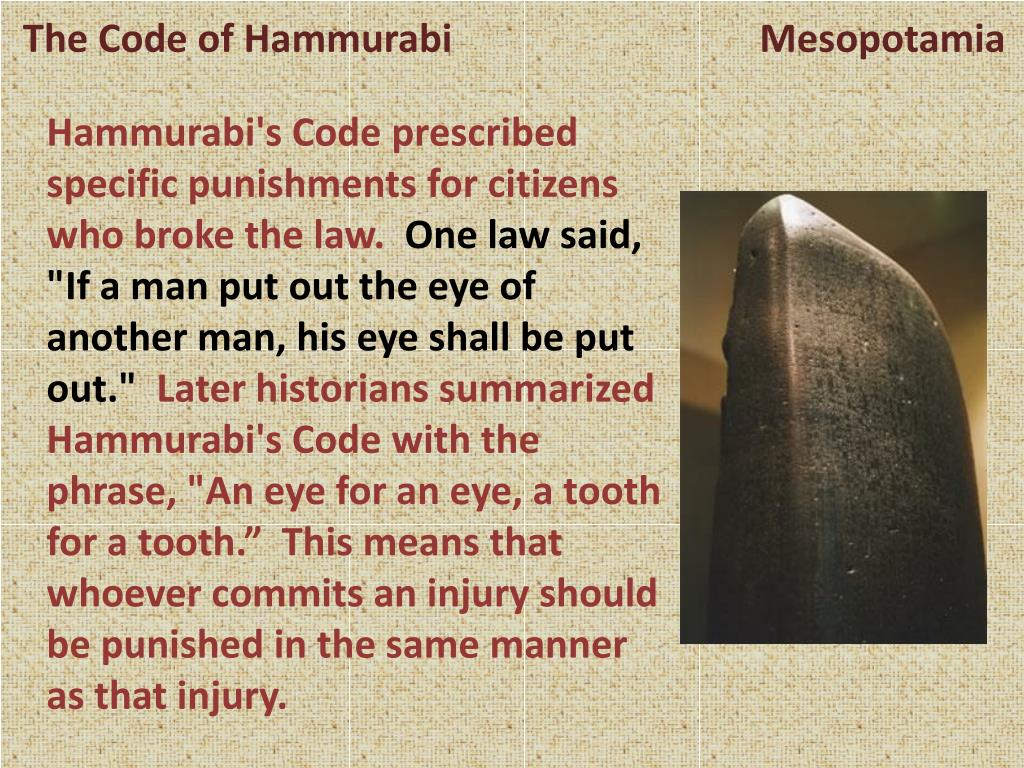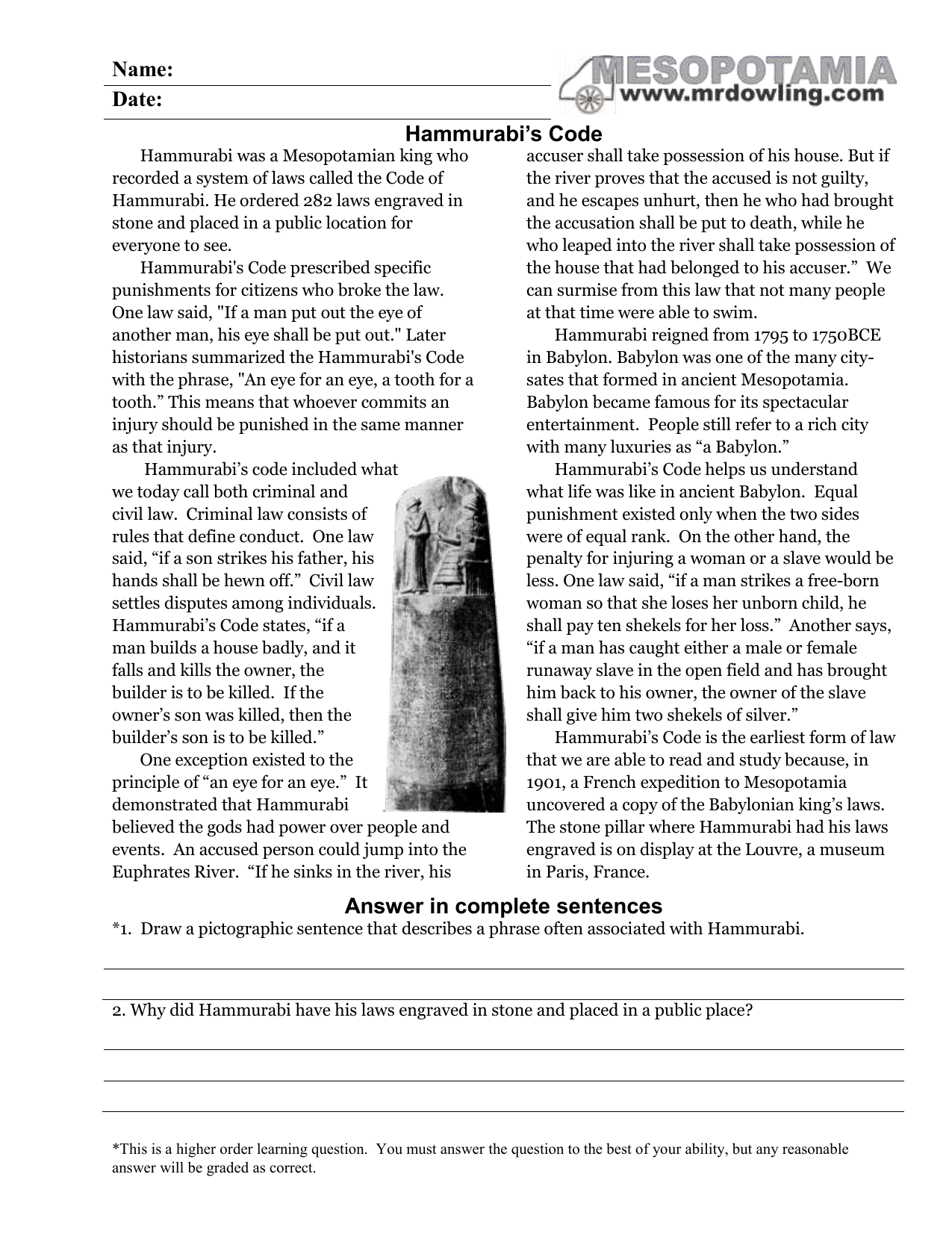

His codes of conduct are considered impossibly harsh and authoritative, but most leaders describe his concern as motivation towards the wellbeing of the society and his own civilians.Īccording to law number 232, if a Babylonian builder built a house with under quality materials which will apparently result in collapsing of the house will leads to death of owner, then builder will be put to death too. It has featured some progressive precepts such as minimum wage’s law, innocent until proven guilty, fairness about graded punishment (Famous saying “an eye for an eye, a tooth for a tooth”). Hammurabi had taught few lessons through his code to the modern business leaders. Being the King, who is leader of civilians, he was concerned about the welfare of people which is clearly depicted through his laws. Hammurabi code is described as “the first code of conduct” which was passed about 4000 years ago. This code was found in 1901 and translation in to publication happened in 1902. It consists of 282 laws describing scaled punishments such as “an eye for an eye, a tooth for a tooth” based on the social groups and consequences of the committed mistakes. The king, Hammuarbi enacted the code in 7.5 Feet Stele stone. Hammurabi is the king who ruled from 1792 to 1750 BC in the middle east.

Please visit the forum home page at to respond to the latest question open till the next Tuesday/ Friday evening 5 PM as per Indian Standard Time.All questions so far can be seen here.Note for website visitors - Two questions are asked every week on this platform. Highlight some of the innovative ways of implementing such moral obligation in an organization?
#Hammurabi code eye for an eye skin#
Hammurabi Code - one of the first law ever written suggests to have one's own skin in the game thus entrusting a moral obligation for fair play. Hammurabi, the expression is so familiar to us today because of its frequent use in the Torah (the first five books of the Old Testament) where references to 'an eye for an eye' can be found in Exodus,Īnyone who kills an animal shall make restitution for it, life for life.Q 263. Known today - although the law itself is likely to date back to well before Which of course brings us back to the reason that this expression is so well Time as Abraham, and about four hundred years before Moses. This means that that Hammurabi lived about the same In about 1786 BC (some scholars speculate that the biblical Nimrod and HammurabiĪre one and the same). Most scholars believe Hammurabi died in 1750 BC, and that his code was written Scholars believe that the earliest human legal systems were almost universallyīased on the principle of the law of retaliation (lex talionis) - that is the Still in existence of The Code of Ur-Nammu predates Hammurabi by at least 300

Laws, but it is by no means the first set of laws. The Code of Hammurabi is the oldest example of an almost complete set of ancient

It is now housed in the Louvre museum in Paris. Inscribed on huge stone slabs, known as steles - one example of which wasĭiscovered in in Iran in 1901 (having been plundered from Babylon in the 12thĬentury BC). The Babylonian King Hammurabi (c.1790 BC). The earliest known example of this expression is as one of the 282 laws of The punishment should match the crime Background:


 0 kommentar(er)
0 kommentar(er)
